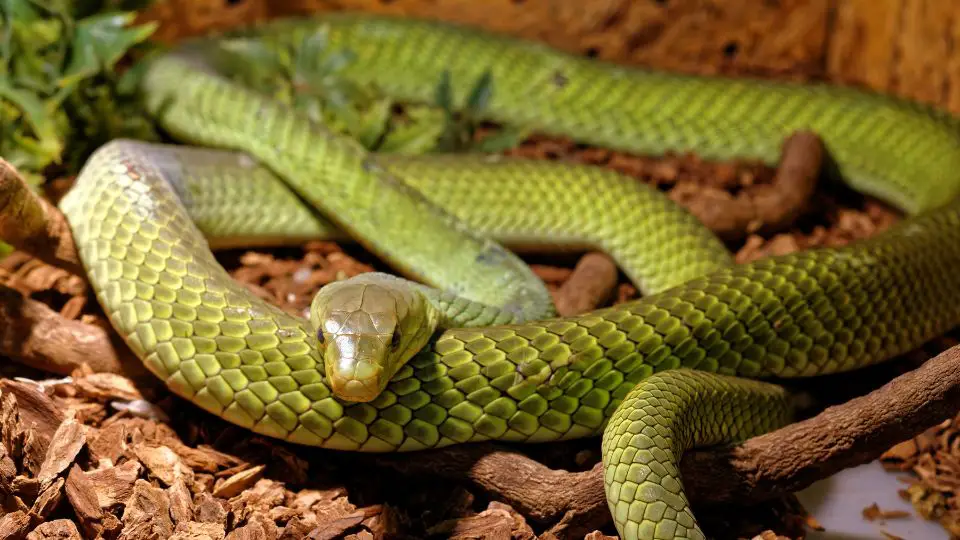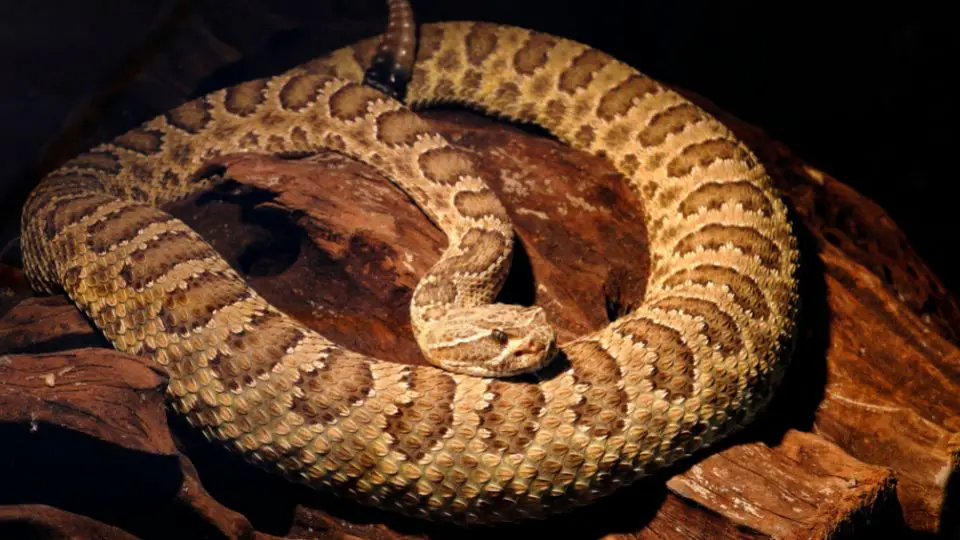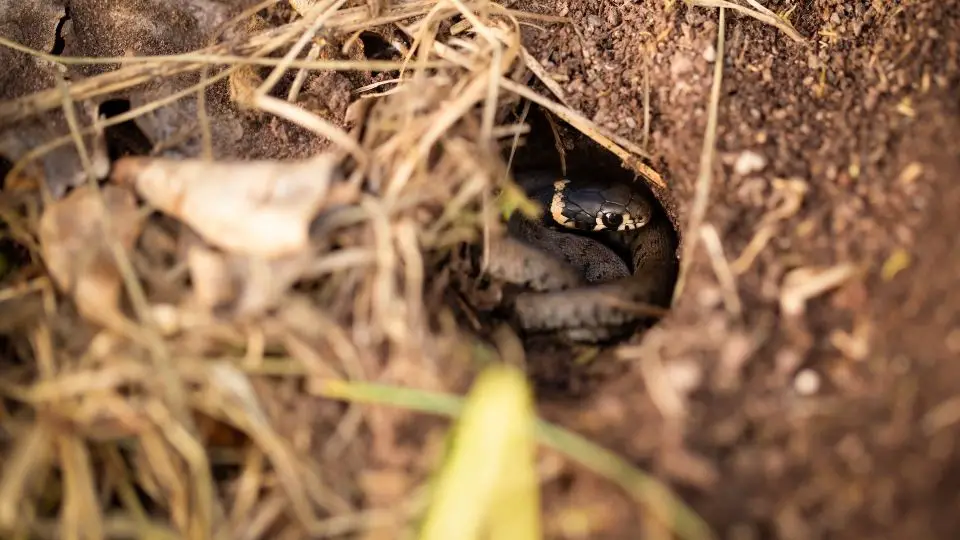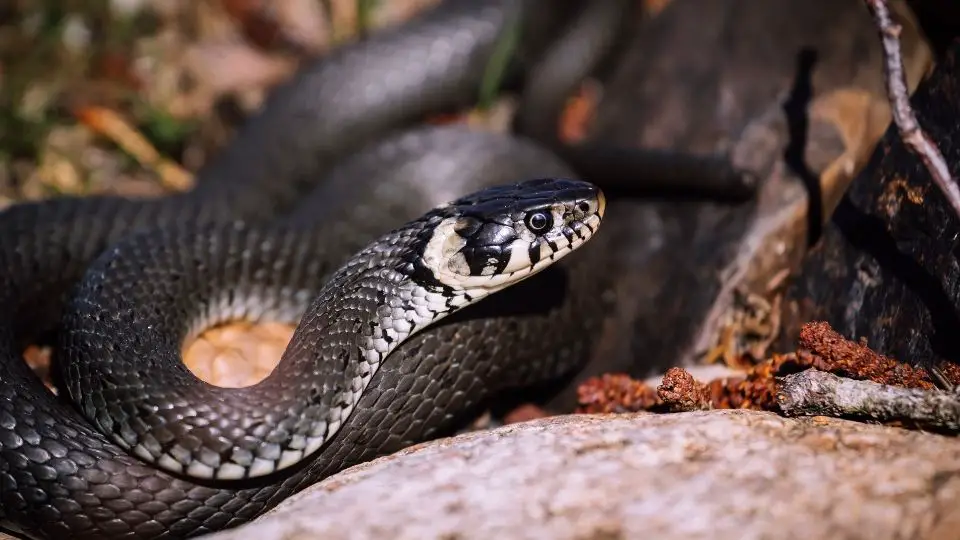No, snakes do not hibernate in the winter—at least not in the way that mammals do. Instead, these ectothermic creatures enter a dormant state of rest known as brumation. This hibernation-like state allows cold-blooded reptiles to save energy and keep warm during the cooler winter months.
Once snakes detect a drop in temperature, they will find a safe place that won’t leave them exposed to predators or the harsh weather. As long as the place is deemed safe to inhabit, this habitat could take on a variety of forms—from abandoned burrows and crevices to log piles.
Once they’re settled in, snakes will spend most of their time holed in their habitat, only coming out whenever they need food or water. Let’s learn more about snakes’ behavior during the winter months.
Table of Contents
Do Snakes Hibernate in the Winter?
While it’s true that snakes enter a period of prolonged inactivity in the winter months, they don’t actually hibernate. To begin, let’s first understand the difference between hibernation and brumation.
Hibernation is a state of deep sleep that allows mammals to conserve energy. It’s marked by a low body temperature, sluggish breathing and heart rate, and a slow metabolic rate.
Hibernating animals—like bears or even bats—prepare for this by overindulging on food in the months leading up to winter. They then rely on these built-up fat reserves to survive the hibernation period.
These animals aren’t meant to wake up during this prolonged period of rest—and if they’ve somehow been roused to a state of wakefulness, they would have depleted a large chunk of their energy to do so.
This can be lethal since these mammals won’t be able to re-enter that hibernating state. They would have lost a lot of energy waking up mid-winter.

What is Brumation?
Brumation is essentially a reptile-exclusive version of hibernation. In this state, snakes enter a period of inactivity or torpor to protect themselves whenever their surroundings get too cold.
But unlike hibernation, which must remain uninterrupted for a creature’s survival, brumating creatures rouse themselves awake from time to time to eat and drink. If they don’t, they won’t have enough sustenance to make it through the frigid season.
Snakes are also ectotherms, meaning they regulate their body temperature with the help of the sun and their surrounding environment. As such, for these creatures to enter a state of brumation, they must find a place that’s warm enough for them to stay comfortable—even your shed or front porch could become their temporary winter home.
An interesting tidbit about snakes is that they don’t undergo brumation when in captivity. This is because they’re provided with the necessary warmth all year round, which makes it unnecessary for them to enter this state of inactivity.

For How Long Do Snakes Hibernate?
Depending on the weather conditions and the snake species, brumation can last for a few weeks to several months. In the wild, brumation can begin as early as September and continue until April.
However, snakes tend to brumate only for three months at a time. This may vary slightly depending on the weather pattern of the snake’s environment.
Where Do Snakes Go When They Hibernate?
Many snake species slither away in remote dens called hibernacula. This is a collective term that refers to safe spaces underground where amphibians and reptiles go when they need to avoid freezing in the winter.
Hibernacula can vary depending on the species of snake. For instance, rattlesnakes favor thick brush and rocky crevices for their hibernacula, while garter snakes choose abandoned rodent burrows or rock crevices.
Some species of snakes even brumate in one hibernaculum, such as rattlesnakes. The area where a snake decides to spend its winter will also depend on its surrounding geography.
Here are other common places where a snake may hibernate in the wild:
- Wood piles
- Ant mounds
- Sinkholes
- Crayfish burrows
- Tree stumps
- Underneath fallen leaves
- Caves

On some occasions, snakes may also find their way into a human settlement. Basements, crawl spaces, car engines, and garages offer enough warmth for these creatures to brumate comfortably.
If you’re worried about a snake taking shelter in your home, contact professional pest control services. Both private and public animal control services have the knowledge and resources to deal with the situation.

